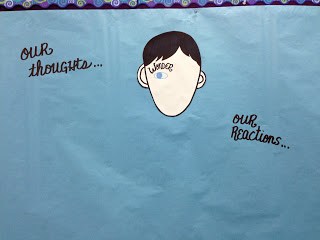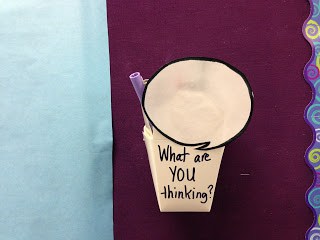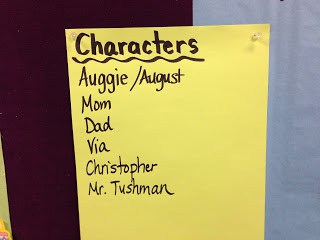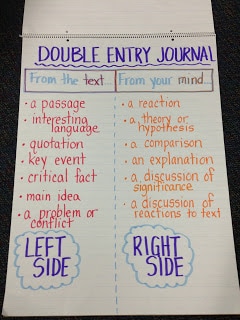As you may know, I have started the book “Wonder” with my class as an “enhanced” read aloud. I say “enhanced” because although I choose my read alouds with my students’ enjoyment in mind, I do make deliberate choices about what texts will “enhance” their reading strategies and skills and their own thinking.
So . . . with “Flutter” we tracked our thinking on some key questions on our “Fluttermobile”, and we are going to interact with “Wonder” in some different ways as well. I truly don’t want read aloud time to be a presentation of a text to my class–but something they are engaged in and an active part of.
Here’s one of the many beautiful things about “Wonder”–the chapters are very short. Some are only one or two pages long! It’s the perfect text to use as a combination read aloud/shared reading experience. I don’t plan on doing it often, but every so often I will make a photocopy of one of those super short chapters, ask the students to read it themselves or in pairs, and to “mark up” the text with thoughts, questions, and so on. We can then project the text and have discussions based on what we read! I’ll report out here on how that goes!
Another thing we are doing with this text is something I often do–keep a running list of characters. What this does is allow students to talk and write more easily about texts without falling into the pronoun problem . . . “Well, he went over and told her about what he did there.” Really? We can do better! This allows them to see the names, spell the names, and use the names in their discussions.
A third way we will be interacting with this text is through our readers response notebooks. Before you get all huffy with me saying that “Read alouds should be for enjoyment only!”, let me explain. I have a number of students who are minimal participators. We are working on it. We aren’t there yet. I have explained to my students all year that reading and understanding is a deeply personal experience–no test can measure how well they truly understand. Remember also that it is good practice to read aloud books that are a level or two more sophisticated than your students can read independently. It allows you to model your own thinking and to “notice” things that can make a book more challenging. It helps make those books accessible to them in the future. So . . . I am going to ask my students to use their notebooks on occasion throughout this text.
We will use the double entry journal format I introduced earlier this year:
 |
| Here is our blank board waiting for comments! |
 |
| A cup with blank “speech bubbles” and markers for students to add their thoughts to the board. |
So . . . off we go into the “Wonderful” world of this book! We have met Auggie and his parents and the infamous “Mr. Tushman” (insert hysterical laughter here). We are starting to build some empathy for Auggie–and are wondering how he is going to handle this adventure he is about to set out on! Stay tuned!







